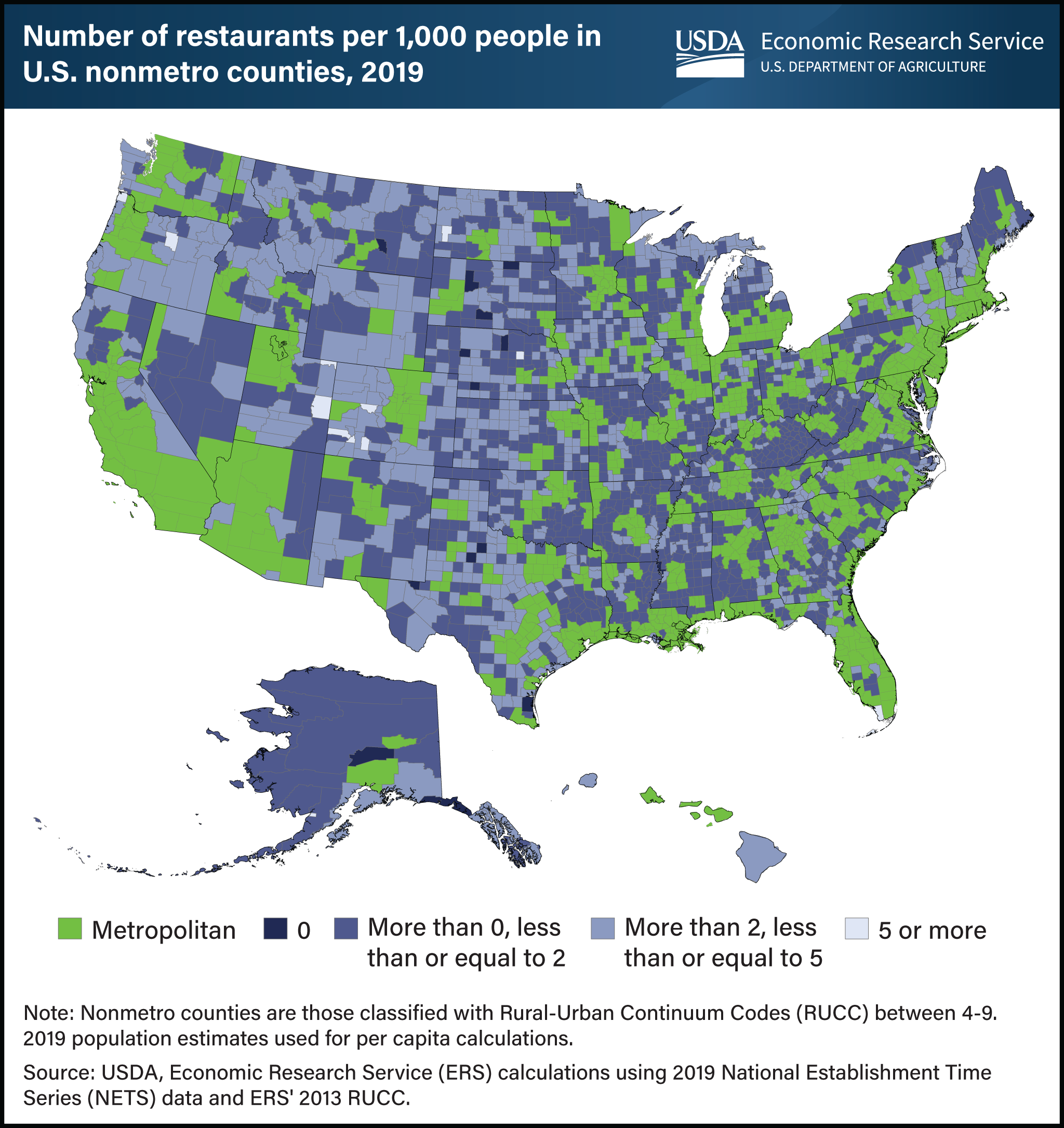Most nonmetro counties had fewer than 5 restaurant options per 1,000 people in 2019
- by Anne T. Byrne
- 4/18/2023

Errata: On August 15, the map was updated with the correct non-metro status for Aleutians West, Alaska. The text and other data were not affected.
Most U.S. nonmetropolitan (rural) counties had 5 or fewer restaurants per 1,000 people in 2019, and many had fewer than 2. This means people in rural areas had fewer food-away-from-home options when wanting to dine out or grab a quick, convenient meal. Nonmetropolitan areas occupy more land in the United States away from the coasts, so residents of the Great Plains and Northern Plains regions may not only be limited in their own counties, but also would have to travel farther to reach a more urban location where restaurant and other food-away-from-home options are varied and available. A select number of counties are both nonmetropolitan and offer more than 5 options for food away from home per 1,000 people. The primary industry in these counties may explain some of these differences. Counties whose economies are most reliant on tourism/recreation typically host more food-away-from-home establishments per capita than other nonmetropolitan counties. An example of recreation-dependent counties with larger numbers of restaurants per 1,000 people can be found in the Rockies, on the western side of Colorado. This map appears in the USDA, Economic Research Service report The Rural Food-Away-from-Home Landscape, 1990–2019, released March 29, 2023.

